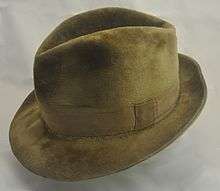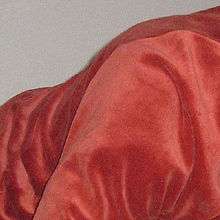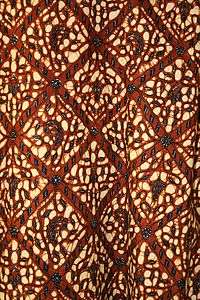Velour


Velour or velours is a plush, knitted fabric or textile similar to velvet. It is usually made from cotton but can also be made from synthetic materials such as polyester. Velour is used in a wide variety of applications, including clothing and upholstery. Other examples include car seats and leotards.
Velour can also refer to a rough natural leather sometimes called velour leather. Chrome tanned leather is ground from the inside, which forms a delicate, soft layer on the surface. It is used for footwear, clothing, and upholstery. This type of leather is often confused with velvet suede and chamois.
Frequent uses
Velour can be a woven or a knitted fabric, allowing it to stretch. It combines the stretchy properties of knits with the rich appearance and feel of velvet. Velour is used in dance wear for the ease of movement it affords, and is also popular for warm, colorful, casual clothing. When used as upholstery, velour often is substituted for velvet.
The velour widely used in the manufacture of theater drapes and stage curtains is manufactured using the same weaving process as velvet: two sets of warps and wefts woven at the same time, with additional threads that will become the nap in between, then cut apart to produce the two separate tufted fabrics. Cotton velours used for this range from 16oz per linear yard to 32oz per linear yard, synthetic versions typically run 13oz to 32oz per linear yard.[1]
In the last decade, velour has been used for pillow covers and mattress coverings. Luxury memory foam mattresses usually come outfitted with Jacquard velour covers, for their comfort and elasticity, as well as their flame resistance. Cotton velour is treated with flame retardant chemicals when used in this application. In contrast, many lower-end air mattresses come manufactured with velour sleeping surfaces.
See also
| Wikimedia Commons has media related to Velour. |
Notes
- ↑ Major theatrical velvet/velour manufacturers: KM Fabrics, Greenville, SC; JB Martin,NY,NY; J.L. DeBall NYC,NY/


.svg.png)